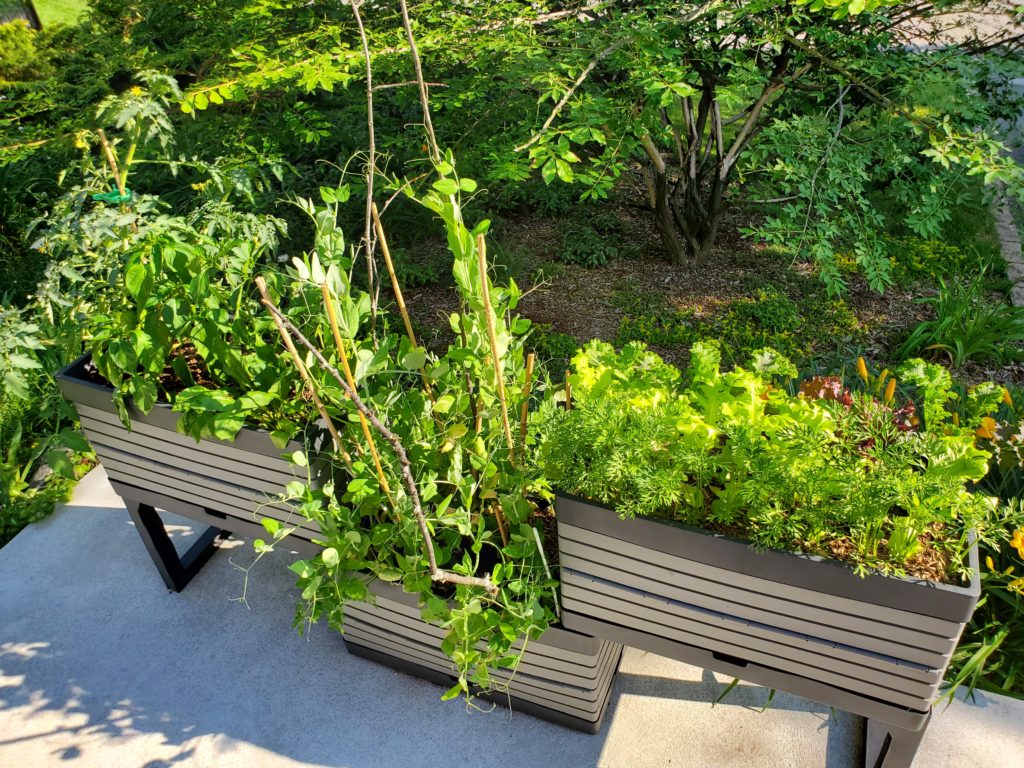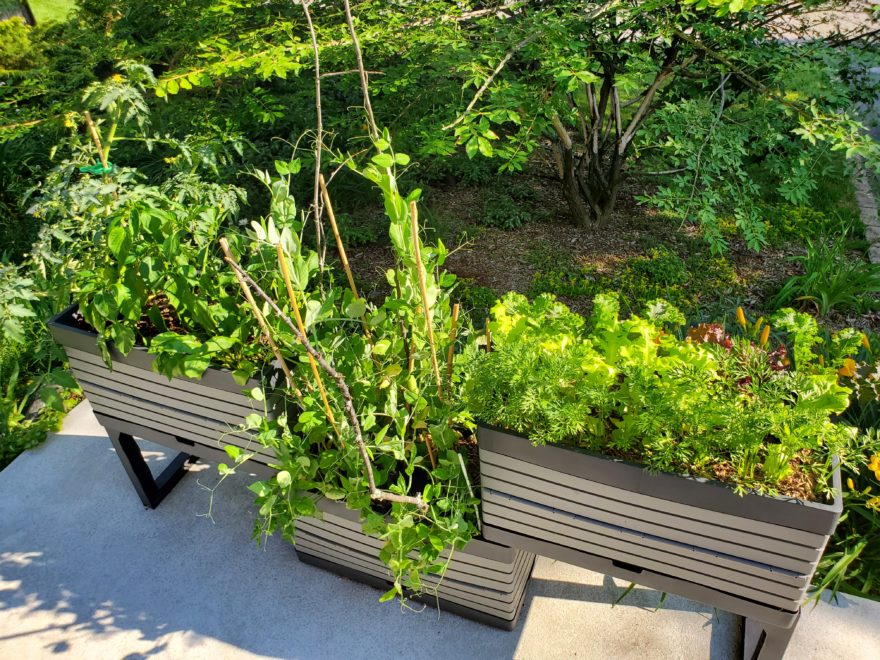With all of my planned activities cancelled due to COVID-19, back in March I decided to try a few new things that I could do at home. One of these was to outsmart our local wild rabbits by planting a small vegetable garden in raised planter boxes.
With snow on the ground here until March or April, many gardeners start their seeds indoors, and then transplant the seedlings into outdoor gardens after all risk of ground frost has passed. This allows our plants to get a head start, because our growing season is short in Montreal.
This was going to be something new for me, so I headed off to a still-open hardware store wearing one of my home-made masks and carrying my own little bottle of hand sanitizer. I have a rare autoimmune and neuro-inflammatory disease, so am being as careful as possible with regards to COVID-19. I’ve also worked in epidemiology and public health, so have a decent understanding of how pandemic viruses spread.
Most shops here in Montreal were closed by order of our public health authorities in mid-March, but grocery and hardware stores were allowed to remain open as ‘essential services’. The one I chose is not only the closest to my home, it also has a nice section of garden supplies.
To start, I picked up two small seed-starting kits; mini-greenhouses. Very miniature! Each one has pods to grow up to seventy seedlings. I knew they wouldn’t all survive, and I was right. We’ll get to that in a bit, though.
Next I started looking for some planter boxes, something into which I could transplant my seedlings, later in the spring. I found something very useful, a set of three rectangular vegetable planters with a modular design. The set comes with two legs, allowing you to set up the planters in a variety of ways and to fit different types of spaces.
This is what they look like today. Behind them, up a few steps, is our front door. To the right is our driveway. The flower and shrub garden extends halfway down our front yard, towards the street.

My plan was to set up the planters in front of the steps leading to our front door, on the large concrete landing. They’d need water often, and full sun, so I thought that location would be perfect.
The best thing about these planters? Each folds down, accordion-style, along its length, for storage. The two legs fit in between the folded planters, creating an easier-to-store rectangle about the size of one of the unfolded boxes. The colour wasn’t bad, either. Slate grey, with charcoal grey edging and legs.
Of course, I didn’t know if any of this would work the way it was supposed to – or whether any of my planned seedlings would survive! Well, it’s good news for my seed-to-planter experiment. Kind of.
The thirty-five cherry tomato seedlings were doing well, but most died off when our frost stayed later than usual this year. I didn’t think to transplant all one-hundred-and-forty seedlings into slightly larger containers, before being moved to the outdoor planters; a rookie mistake.
One little cherry tomato seedling survived, although it didn’t look so good when I gently moved it into the first of the planters on May 25. Following the instructions on the mini-greenhouses, I’d brought them outside every day for a week and then brought them inside overnight.
After a week of that, because of our cool spring temperatures, I had to leave them out overnight for another week. Only then could I transplant the seedlings into their ‘summer home’.
Wondering about that lone surviving cherry tomato plant? It recovered, and is now huge! The first green cherry tomatoes have already appeared, so it’s coming along well. I’d also grown thirty-five sweet pepper seedlings, for small plants of miniature sweet peppers, and was able to save almost ten of those.

Some of these pepper plant seedlings went into the same planter as the cherry tomato. I wanted room to seed some golden beets in the same planter, so I put several of the pepper seedlings into large flower pots and then placed them in a few empty-looking areas in our non-vegetable gardens.
They’re all doing well, and I can see the tiny peppers starting to grow from each flower. None of my rosemary seedlings survived, but I was able to save a few of the Italian parsleys. The latter are in the second planter, along with some climbing pea vines which I seeded directly there.
The third planter is the only one that looks like a real vegetable garden, with neat rows of plants, because I planted them all from seed. When I transplanted the seedlings into the first and second boxes, I used a triangular spacing pattern. That last planter has two rows of mixed lettuce plants, and a row of carrots.
Why am I writing about vegetables? I’m so glad you asked! First off, because it was something hopeful to do during the height of our local COVID-19 self-isolation period; to plant seeds, and then nurture them into tiny seedlings, and then to full-sized plants.
Every morning I’d wake up and check on these plants, first thing. It made staying at home just a bit better. Know what? I still do the same thing; first thing each day I go out the front door and check on these plants, with particular care for the ones I started indoors in April ‘-)
Second, the current pandemic has shown us how reliant we are on imported foods. With our local farms under up to two metres (six feet) of snow all winter, the prices of many imported fruits and vegetables quickly increased once borders began to close around the world. So it’s nice to know that I can grow – and then can or freeze – some of my own produce.
Finally, I’m posting about my first attempt at a container garden for vegetables because I’ve been trying to focus my diet on anti-inflammatory foods since being diagnosed with my rare disease back in 2016; CRPS, for Complex Regional Pain Syndrome. Fresh fruits and vegetables are an important part of this, and you can’t get fresher than growing your own.
Growing the seedlings was a really nice way to pass some of the time in self-isolation in March and April, when we still had cold weather and snow on the ground. Now that the container garden is going well, it’s fun to look after it. Not too big, not too much for me to handle with the full-body fatigue that sometimes hits from the autoimmune facet of CRPS.
Like the ending to the fable of Goldilocks and the three bears, my little container garden is just the right size! Whatever it is that you’re doing these days, I hope that you find joy in the little things, like watching plants grow.
As always, thanks so much for stopping by. I wish you happiness, health that’s as-good-as-can-be, love, peace, and well-being. Stay safe.

